Cultural Resources
CULTURAL RESOURCES
Sunday, April 8, 2012
Don Darius Butler, Guest Cultural Resources Commentator
Pastor, Tabernacle Community Baptist Church, Milwaukee, WI
I. Historical Overview
For the Christian church, Easter is its highest of holy days. The feast, which celebrates the resurrection of the Lord Jesus Christ from the dead, commemorates and proclaims Christ’s victory over the presumption of death and its companions, hell and the grave. Within the annals of salvation history, Easter is without equal; not even Christmas can contest the primacy of this moment. For Christmas must always be interpreted in light of the suffering of crucifixion and the victory of resurrection, the very heart of the Easter celebration. The foundational witness of the Christian faith is the life, death, and resurrection of Jesus Christ and this reality forms the basis of Christian preaching. This is the great paschal mystery that Christians have celebrated since the earliest days of the church. As the apostle Paul joyfully declared: “...Christ has been raised from the dead, the first fruits of those who have fallen asleep. For as by a man came death, by a man has come also the resurrection of the dead. For as in Adam all die, so also in Christ shall all be made alive... ‘O death, where is your victory? O death, where is your sting?’ The sting of death is sin, and the power of sin is the law. But thanks be to God, who gives us the victory through our Lord Jesus Christ!” (1 Corinthians 15:20-22 and 55-57). On Easter Sunday this truth is the refrain that is exclaimed.
Easter is a moveable feast (it does not fall on a set date every year). In the Western World, Christian churches celebrate Easter on the first Sunday following the full moon after the vernal equinox on March 21. Therefore, Easter is observed anywhere between March 22 and April 25 every year.1 More than just a single-day observance, Easter is an entire season (The Great 50 Days) of the liturgical year. Lent, the 40-day period leading up to Easter Sunday, is a time of solemn reflection and penance and reflects the 40 days of wilderness testing before Jesus begins his public ministry. The week preceding Easter is called Holy Week and includes Maundy Thursday, which commemorates Jesus’ last supper with his disciples; Good Friday, which remembers the day of his crucifixion; and Holy Saturday, which focuses on the transition between the crucifixion and resurrection. The 50-day period following Easter Sunday is called Eastertide and includes a celebration of Jesus’ ascension into heaven.
II. Word Etymology
The exact origins of Easter’s name are unknown. Some sources claim that the word is derived from the Teutonic goddess, Eostre, the deity of spring and fertility, while other sources trace the name to the Latin term hebdomada alba, or “white week,” an ancient reference to Easter week and the white apparel worn by catechumens at their baptism during that week. A translation error presented the term esostarum in Old High German, and it eventually became Easter in English.2
III. Biographical & Personal Testimonies
The enduring significance of Easter is the inherent and professed power of life over death and destruction. The resurrection is God’s answer to the presumptuous power of death. In Luke’s gospel narrative, the disciples were to be witnesses of this testimony once they received the power of God upon them. From Jerusalem they carried this inspiring message abroad and the kingdom of God increased greatly. Year after year, successive generations of the faithful are commanded to carry the same testimony to those who have not heard this liberating message. Through proclamation and personal witness, the story of the resurrection is told from age to age—it is a timeless story that is renewed in every age. Stories of human triumph over tragedy affirm the power inherent in the resurrection and proclaim a similar victory over death, regardless of the form in which it is manifested.
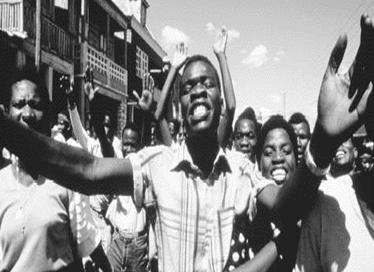
One such story is narrated through the journalism of Anderson Cooper of CNN. On January 14, 2010, just days after a catastrophic magnitude 7.0 earthquake struck the Republic of Haiti, the international journalist filed a report with Larry King on Larry King Live. King led the segment by asking Cooper to elaborate on a statement that Cooper had tweeted earlier in the day: The camera lens is too small to capture what’s really going on. Cooper’s response described the scenes and sounds that were happening all around him. He meticulously observed:

In these words, Anderson Cooper became a witness to the indomitability of the human spirit, the noble endurance even in the face of the worst kind of death and destruction. It was hard for Cooper, and those watching the telecast, to imagine that a people who had faced such a horrific reality—and who had it yet before them at the time of the reporting—could muster such a remarkable response to the overwhelming stench of death. Cooper continued:

The statement about the inadequacy of the camera lens to capture all that was occurring intersects with the story of Easter. Luke testifies that the disciples were to take this message to all so that the good news might get out. Luke, feeling limited in what he could tell himself, sets forth this orderly account to Theophilus so that the story would be told. And now those of us who hear the same message are counted among the witnesses of the same event.
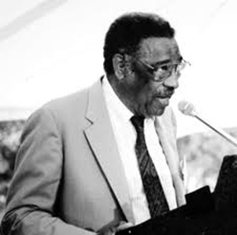 |
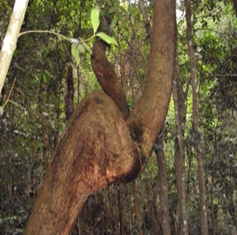 |
||
| Dr. Samuel D. Proctor | A knotted tree |
Another testimony to the power inherent in the resurrection comes through in a story told by the late Samuel D. Proctor. He recalled a visual experience in his life that surfaced when preaching about overcoming setbacks. Proctor was driving along on a road in rural Arkansas headed for a conference when he saw a small tree—only about three feet high—with a loop in its trunk. He observed that that “it was alive, strong, thriving, and bearing green leaves. It was on its way to becoming a real tree with a big knot tied in its trunk.”5 Proctor stopped his car and reversed in order to take in the site. He questioned if a road worker or cyclist or even a prison inmate working on a chain gang had taken rest in the grass and tied a knot in the trunk of the tree. He concluded that, however it happened, the tree had an opportunity to give up on being a tree, but refused to do so. He said:
Proctor notes that many people have experienced the crippling effects of life, but, like the tree, found strength to keep growing. This is a lesson of the resurrection, for nothing is worse than death, but not even death could restrain the power of God. Likewise, nothing should thwart the potential and possibilities of those who reside in the victory of the resurrection.
IV. Poetry
In her poem “Still I Rise,” May Angelou muses about the indefatigable spirit of humanity.” Her lyrics are compelling on their own, but they carry a profound theological truth when read in light of Easter. It bears witness of one who is unconquerable and unrelenting. Although a recipient of the worst that the world offers, this one refused to be broken and destroyed by external forces. It is an appropriate testimony for those who live their lives with their backs against the wall, whose spirits are constantly crushed by the harsh brutalities of life, whose minds are confused by a multiplicity of issues.
Still I Rise
You may write me down in history
With your bitter, twisted lies,
You may trod me in the very dirt
But still, like dust, I’ll rise.
Out of the huts of history’s shame - I rise
Up from a past that’s rooted in pain - I rise
I’m a black ocean, leaping and wide,
Welling and swelling I bear in the tide.
Leaving behind nights of terror and fear - I rise
Into a daybreak that’s wondrously clear - I rise
Bringing the gifts that my ancestors gave,
I am the dream and the hope of the slave.
I rise, I rise, I rise.7
V. Songs for the Moment
The following hymn, “Christ Arose (Low in the Grave He Lay)” by Robert Lowry, takes me back to worship at the Mission Baptist Church, New Providence, Bahamas, on Easter Sunday. What is striking about this hymn is the contrast in tempo and rhythm between the stanzas and the refrain. The stanzas carry a somewhat melancholy mood, while the refrain bursts into joyous song. The lyrics of the hymn tell the story of the Easter Triduum. In stanza two, the Roman guards are noted for engaging in a futile endeavor in trying to keep him sealed. Then stanza three proclaims the power of God over death and its hold. When sung with the intended contrast, the singer (and hearer) comes to understand the mood of Easter—joy coming forth from mourning.
Christ Arose (Low in the Grave He Lay)
Low in the grave He lay, Jesus, my Savior!
Waiting the coming day, Jesus, my Lord!
Vainly they watch His bed, Jesus my Savior;
Vainly they seal the dead, Jesus my Lord!
Death cannot keep its Prey, Jesus my Savior;
He tore the bars away, Jesus my Lord!
Up from the grave He arose,
With a mighty triumph o’er His foes;
He arose a victor from the dark domain,
And He lives forever with His saints to reign;
He arose! He arose! Hallelujah! Christ arose!8
Although not explicitly about Easter, Yolanda Adams’s song “Yet Still I Rise” speaks the truth of the resurrection. The message is proclaimed: the buoyancy of humanity. Although afflicted and weighted with overwhelming cares, burdened by the ills of the world, the human spirit grows toward the light of God and rises in victory. This song presents a wonderful opportunity for a liturgical dance presentation.
Yet Still I Rise
Shattered, but I’m not broken
Wounded, but time will heal
Heavy the load, the cross I bear
Lonely the road I trod, I dare
Shaken, but here I stand
Weary, Still I press on
Long are the nights, the tears I cry
Dark are the days, no sun in the sky, yes
Yet still I rise, Never to give up
Never to give in against all odds
Yet still I rise, High above the clouds
At times I feel low, Yet still I rise 9
Perhaps one of the all-time best hymns of Easter, “The Strife Is O’er” tells the story of the resurrection. The cosmic battle between the powers of death and the life of God has been settled by the resurrection. The second stanza states this explicitly by affirming Christ’s power of the legions of death. They presumed that their worst would get the job done, but they were trumped by God. I have heard this hymn used as a responsorial to the reading of Scriptures in Easter worship or as the gradual hymn.
The Strife Is O’er
The strife is o’er, the battle done;
The victory of life is won;
The song of triumph has begun: Alleluia!
Alleluia! Alleluia! Alleluia!
The powers of death have done their worst;
But Christ their legions hath dispersed;
Let shouts of holy joy outburst: Alleluia!
Of course, one cannot neglect the powerful declaration made in the song “Ain’t No Grave Can Hold My Body Down.” There is no statement more significant for the celebration of Easter than the one proclaimed in this song. It affirms emphatically that the place of death cannot lay claim to our bodies forever. Though our bodies may be held captive for a time, they will ultimately be released and the power of the grave over us effectively broken.
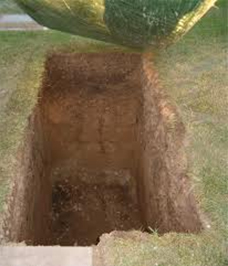
Ain’t No Grave Can Hold My Body Down
There ain’t no grave
Can hold my body down
There ain’t no grave
Can hold my body down
When I hear that trumpet sound
I’m gonna rise right out of the ground
Ain’t no grave
Can hold my body down
VI. A Learning Moment: Testify! Testify!
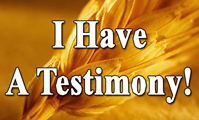
The celebration of Easter offers worshippers a wonderful opportunity to proclaim and reaffirm their victory over the forces of death, however it is manifested. In this respect, I propose an ongoing (throughout the Easter season) testimonial time in public worship that offers congregants a chance to share their narratives of death and destruction along with God’s narrative of resurrection and new life.
This will require skillful work on the part of the coordinator of the event. (The testimonies should be prescreened by the pastor or designee to maintain the integrity of the worship services.) This ministry sharing should be framed as an opportunity to encourage those who are yet in the cold grips of death, those whose lives are marked by defeat, despondency, and dejection. Congregants can share their struggles with addiction, debt, or poverty, grief over the death of a loved one, etc., and relate how they have found new life from such experiences and live in the light of the resurrection. The goal is to communicate the victory of resurrection over what once kept the person bound and defeated. This will bring the power of Easter to every heart.
Notes
1. “History of Easter.” History.com. Online location:
http://www.history.com/topics/history-of-easter accessed 15 December 2011
2. Ibid.
3. “Heartbreak in Haiti” Larry King Live Transcripts. Online location:
http://transcripts.cnn.com/TRANSCRIPTS/1001/14/lkl.01.html accessed 16 December 2011
4. Ibid.
5. Proctor, Samuel D. The Certain Sound of the Trumpet: Crafting a Sermon of Authority. Valley Forge: Judson Press, 1994. p. 115.
6. Ibid.
7. Angelou, Maya. “Still I Rise.” Online location : http://poemhunter.com/poem/still-i-rise/ accessed 16 December 2011
8. Lowry, Robert. “Christ Arose (Low in the Grave He Lay).” African American Heritage Hymnal. Chicago, IL: GIA Publications, 2001. #283
9. Adams, Yolanda. “Yet Still I Rise.” Metro lyrics online location:
http://www.metrolyrics.com/still-i-rise-lyrics-yolanda-adams.html accessed 16 December 2011










